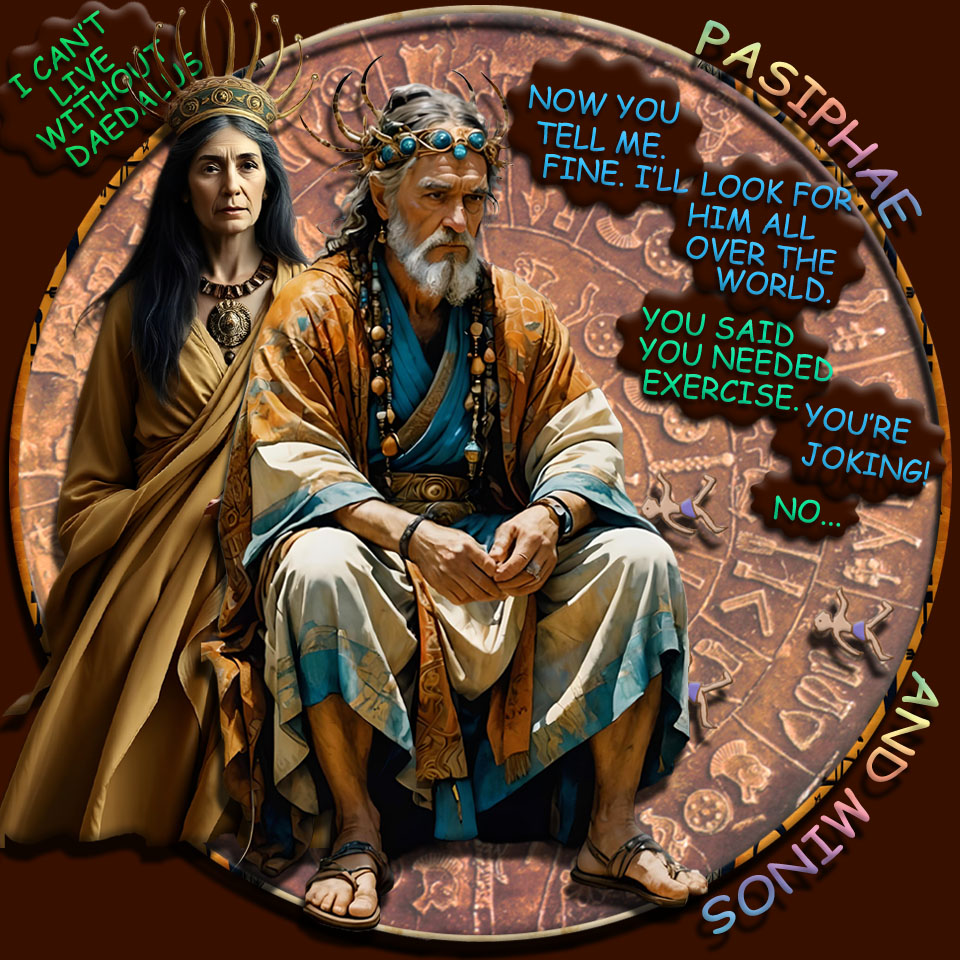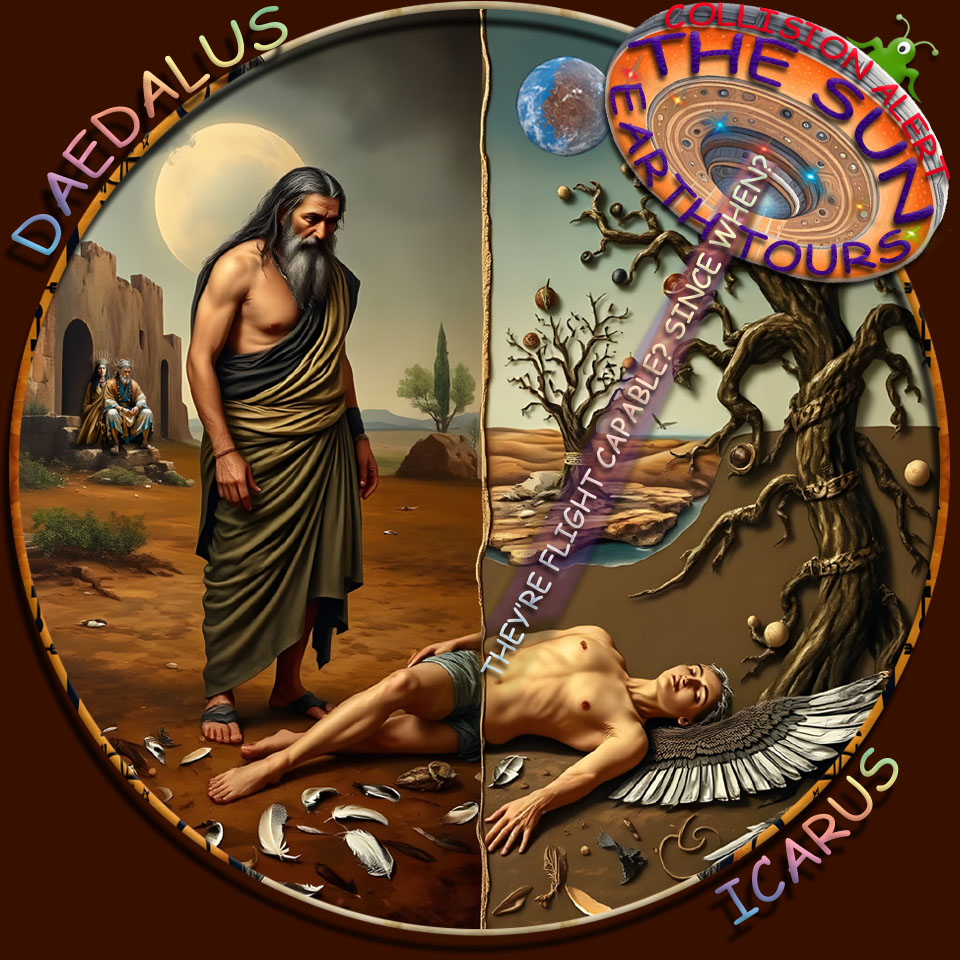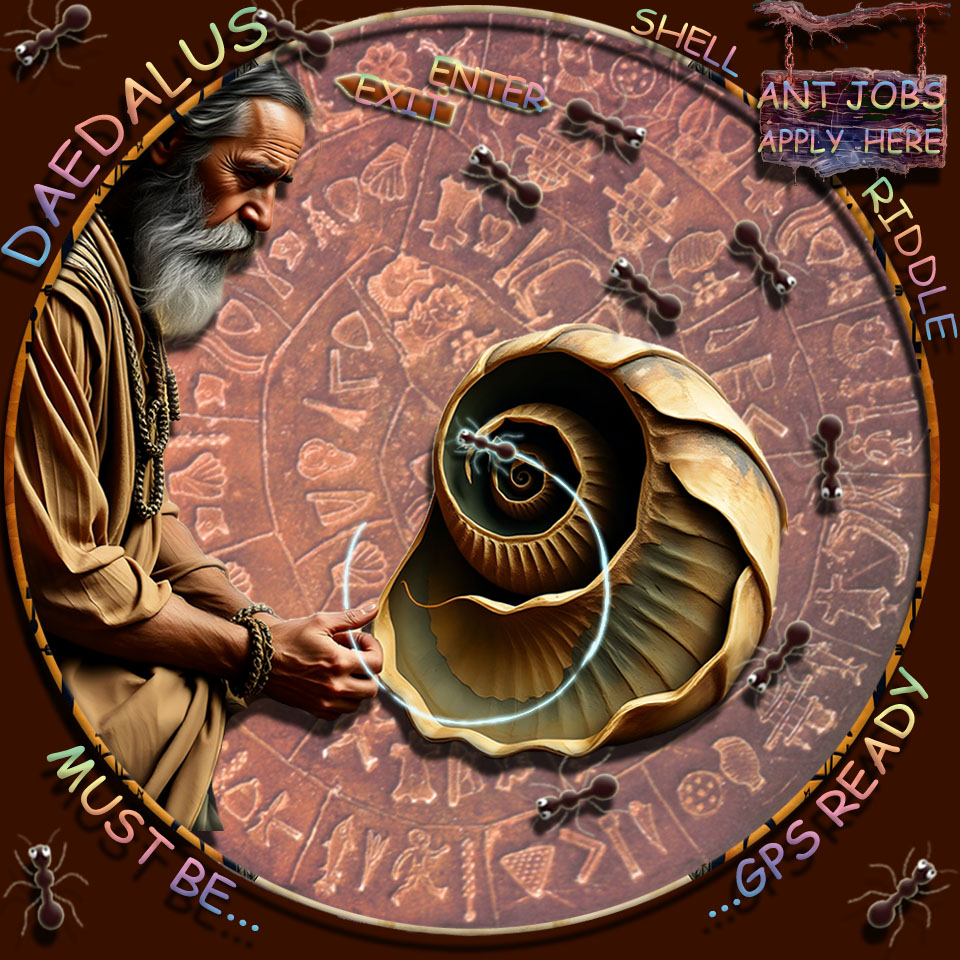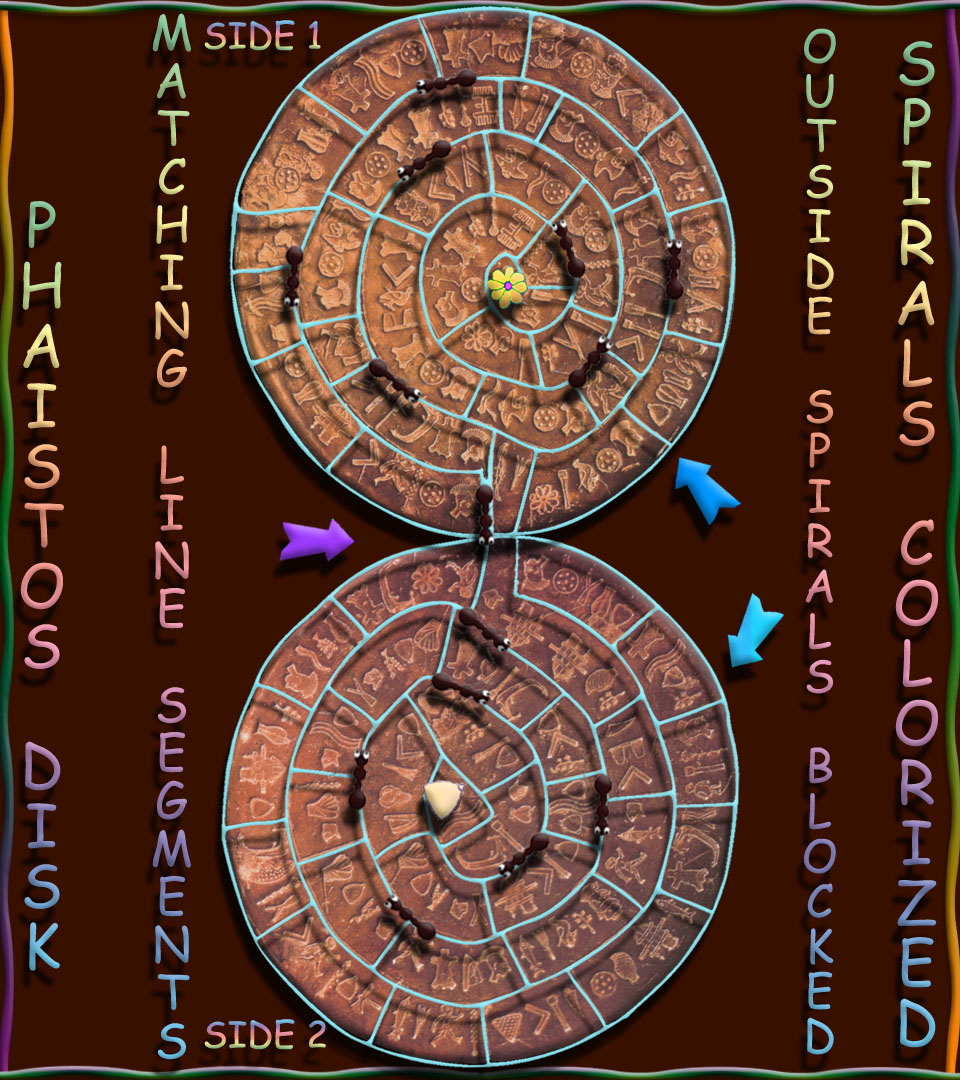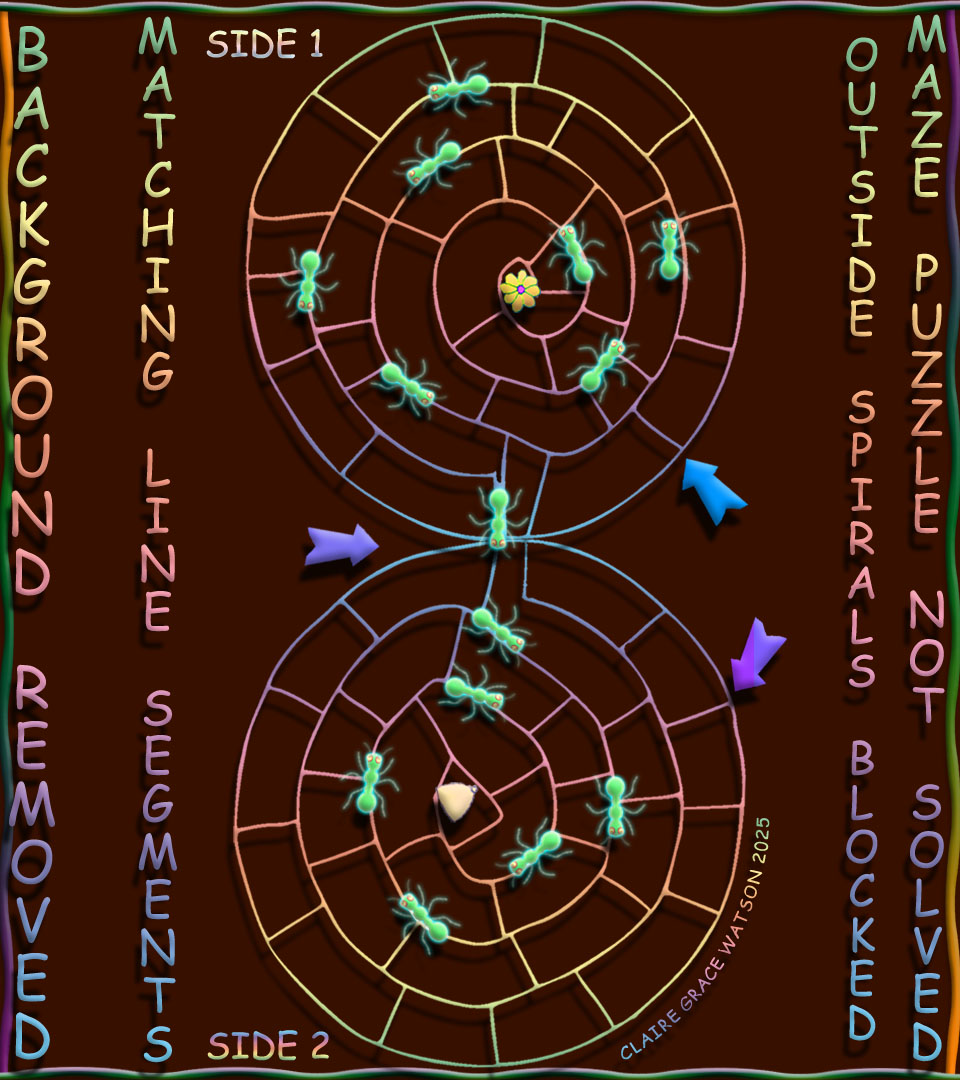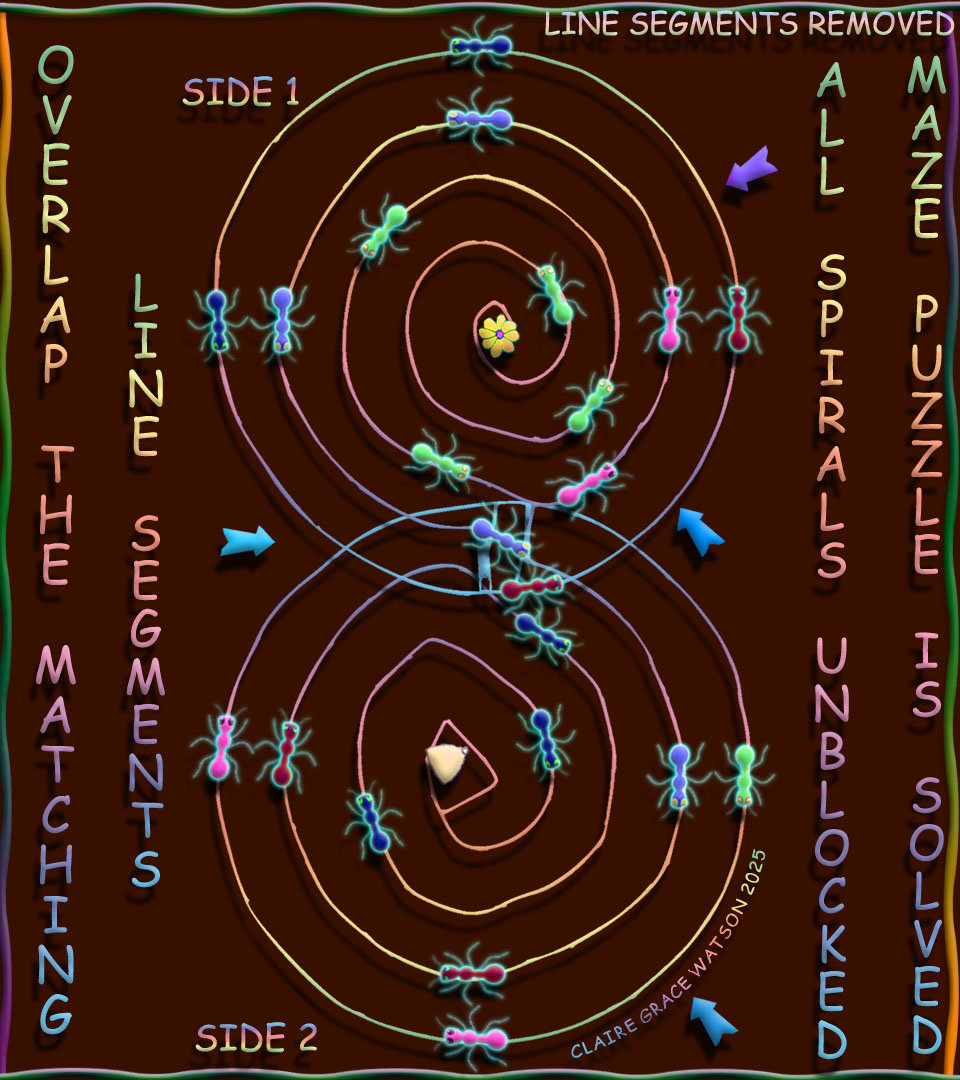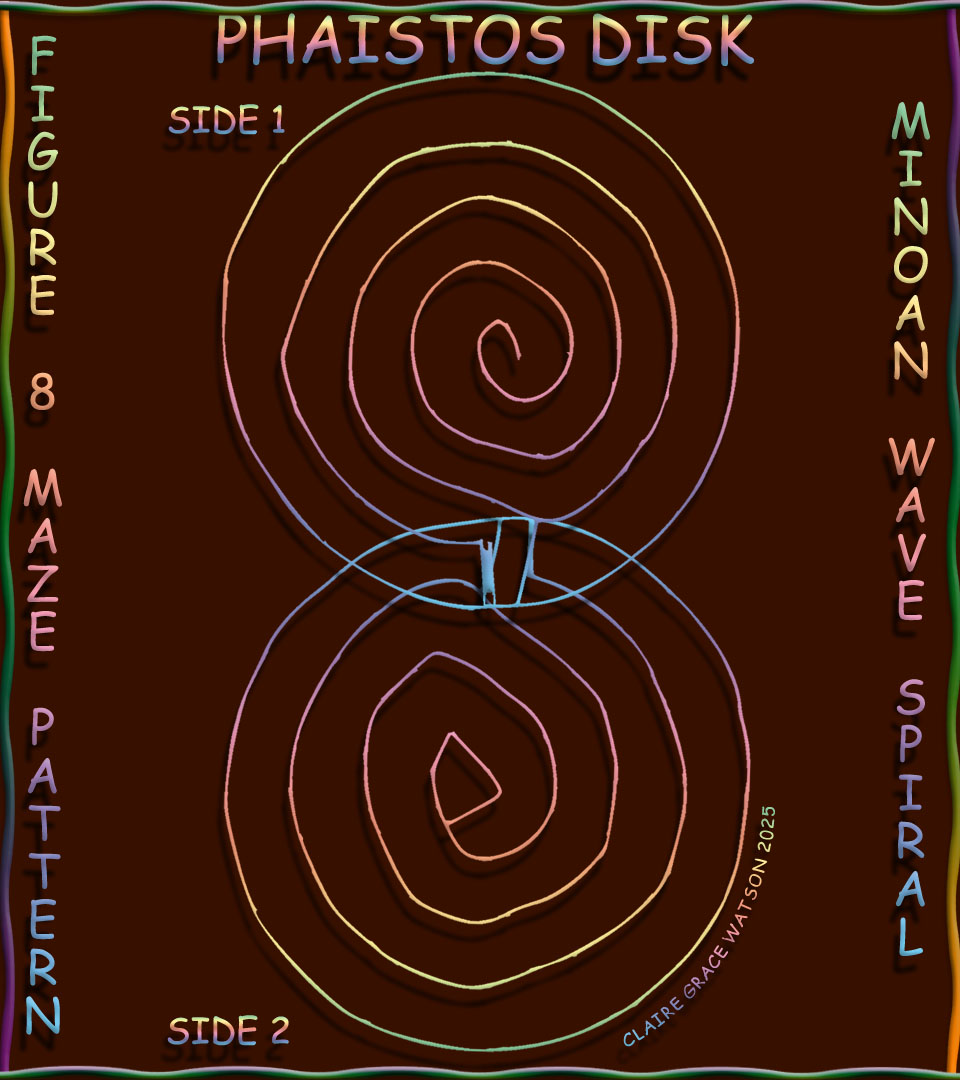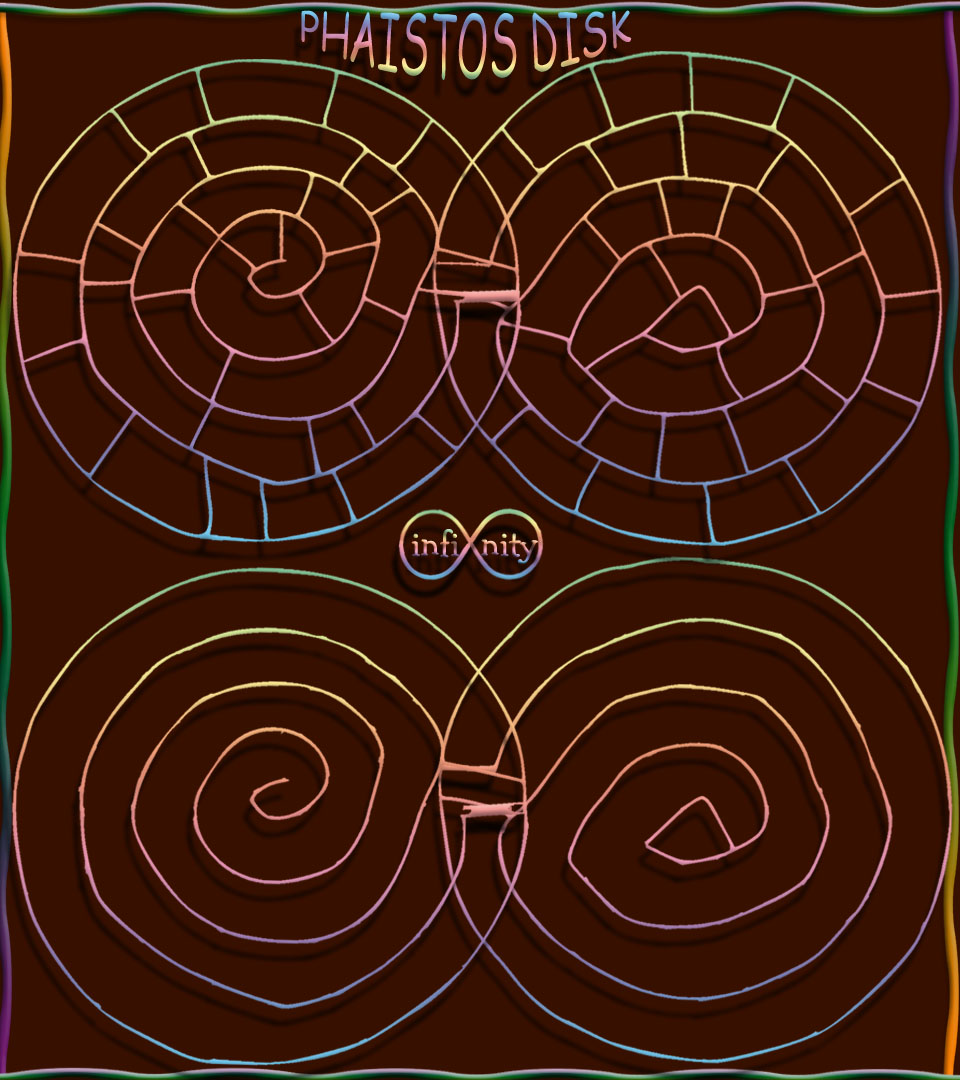

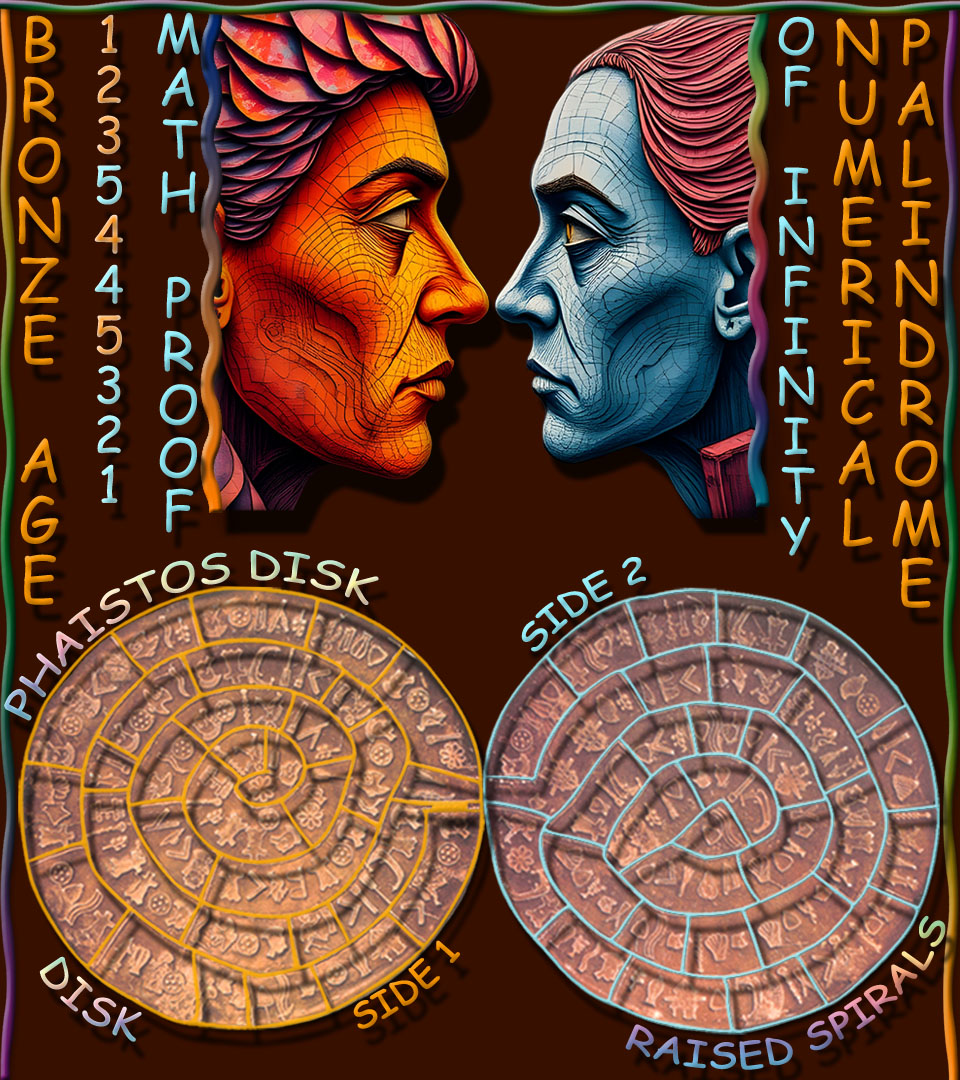
The solution to the Phaistos Disk maze puzzle offers an early math proof of infinity in the form of a numerical palindrome - 1235445321 - certainly worth preserving for posterity. To solve the maze, and experience the palindrome, overlap Side 1 onto Side 2 at the matching, connecting line segments. Next, start at the center of Side 1, then move counterclockwise. Cross over from Spiral 3, Side 1, to Spiral 5, Side 2 (green leaf), and move clockwise. Cross over from Spiral 5, Side 2, to Spiral 4, Side 1 (pink leaf) and move counterclockwise. Cross over from Spiral 4, Side 1, to Spiral 4, Side 2 (purple leaf), move clockwise. Cross over from Spiral 4, Side 2, to Spiral 5, Side 1 (yellow leaf), move counterclockwise. Cross over from Spiral 5, Side 1, to Spiral 3, Side 2 (orange leaf), move clockwise and travel to the center of Side 2 , creating the shape of a figure 8 twice. Return in the same pattern. (1, 2, 3 into 5, 5 into 4, 4 into 4, 4 into 5, 5 into 3, 2, 1) The maze puzzle has been solved and the numerical palindrome math proof of infinity established.
The Phaistos Disk preserves not only the ancient advances of Hermeticism with its astonishing theories about the universe but also the Hermetic embrace of the culture with inclusion of the greatest of Cretan myths, the Maze of Daedalus. In this unique way does the Phaistos Disk put the art in artifact as it delivers this complex information in a simple way, based on the Minoan love of mazes and their creation of
our 48 original constellations by connecting stars with lines.
The two-sided
terra cotta disk from the Mediterranean Bronze Age was found in 1908 in a
basement of the burned-down Phaistos Palace, Crete. Fire-hardened,
perhaps by the fire, it is an anomaly in a Minoan world of sun-baked
pottery. One of archaeology's greatest mysteries, it is, like the universe, a
masterpiece of concealment. When we are right in the heart of it, we see
chaos, but that only conceals the patterns.
From out of this ancient world, from the same time and the same place, comes the other renown mystery, the Maze of Daedalus. Are the Phaistos Disk and the Maze of Daedalus the same thing? In the Phaistos Disk, we have the artifact but not the narrative, and in the Maze of Daedalus, we have the narrative but not the artifact. They fit together like interlocking puzzle pieces.
Daedalus had invented remarkable wings fashioned of feathers and wax and designed to give flight to whomever wore them. While he was busy working on a project for the queen, his son Icarus put on the wings and flew too close to the sun.
Daedalus, in his grief, blamed himself and wandered the Aegean world mourning the loss of his son. "After burying Icarus, Daedalus traveled to Camicus in Sicily, where he stayed as a guest under the protection of King Cocalus." (Wikipedia)
As King Minos searched for Daedalus he carried with him a seashell puzzle, called the Shell Riddle, and asked everyone he met to solve it. He knew that only Daedalus could solve the riddle, and this was how he meant to identify him since he might be much changed in appearance.
"Minos, meanwhile, searched for Daedalus by traveling from city to city asking a riddle. He presented a spiral seashell and asked for a string to be run through it. When he reached Camicus, King Cocalus, knowing Daedalus would be able to solve the riddle, accepted the shell and gave it to Daedalus. Daedalus tied the string to an ant which, lured by a drop of honey at one end, walked through the seashell stringing it all the way through." (Wikipedia, Daedalus)
Think of the Phaistos Disk as the spiral seashell, and the spirals of the
Disk are the string running through. The string becomes more famously known as Ariadne's Thread
in a late Bronze Age fiction written by Plutarch based on the Shell Riddle, and involving Theseus, a Minotaur, and a maze. The
riddle in all cases is how to get all the way through the seashell to find the honey, or through
the maze to escape the Minotaur, or through the Disk to solve the maze.
The solution to a maze puzzle is the uninterrupted path through a series of intricate line segments from a starting point to a goal. This maze puzzle, the Shell Riddle, is not solved until the outside spirals of the seashell are part of the uninterrupted path from the center of Side 1 (flower/sun) to the center of Side 2 (honey pot/star.) Only if the ants can easily travel in a straightforward manner on the outside spirals (edges of the Disk) to find the Honey Pot is the Shell Riddle solved.
The revelations of the Phaistos Disk continue...
Copyright Notice - Disk of the World - Text and images copyrighted March 21, 1993-2025, Claire Grace Watson, B.A., M.S.T., U.S. Copyright and under the Digital Millennium Copyright Act of 1998, All rights reserved. No part of this web page may be reproduced or transmitted in any form or by any means without written permission from the author, except for the inclusion of brief quotations in a review.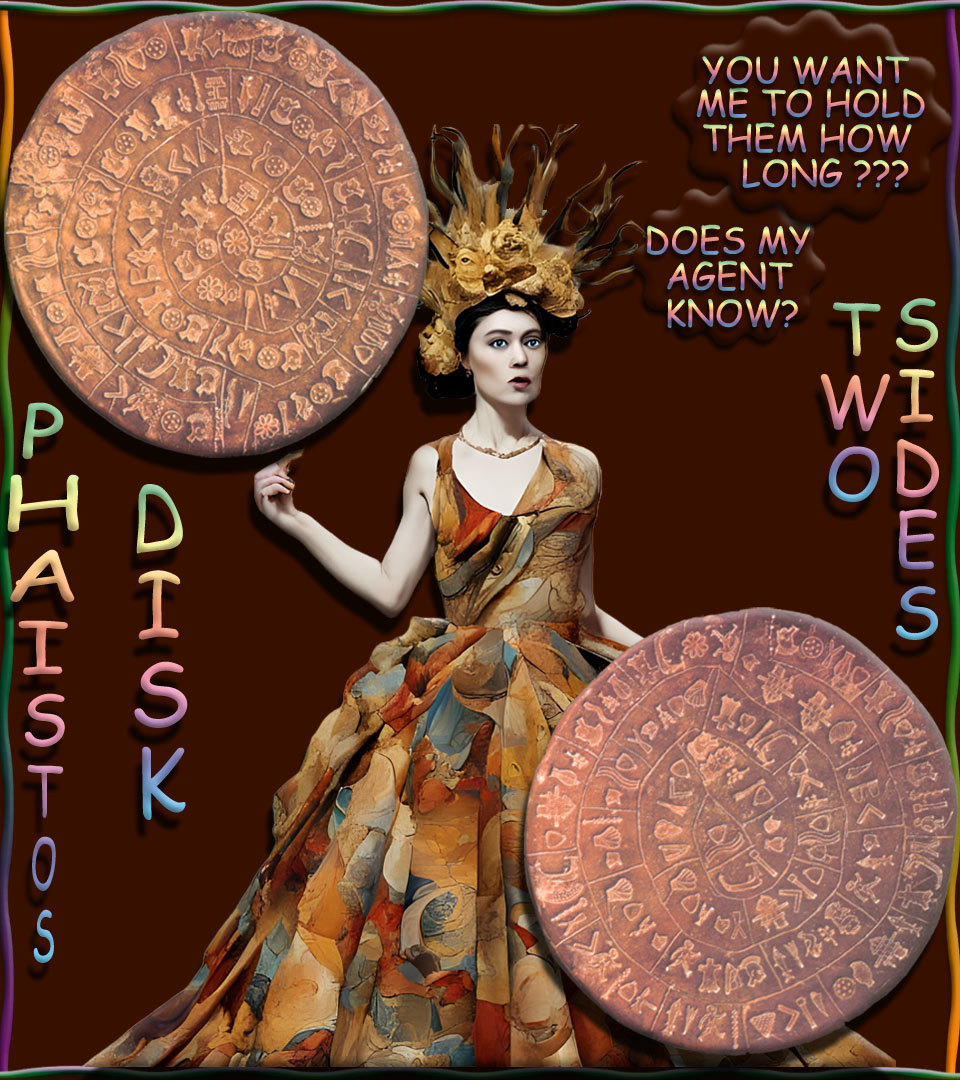
 The Daedalus myth, from Greek mythology that began in the Minoan
civilization, involves the Shell Riddle. King Minos of Crete went searching
for Daedalus, the renown inventor and favorite of Queen Pasiphae, at the urging of his wife. The inventor was wandering the world in grief, and the king and queen were much concerned. A tragedy had occurred.
The Daedalus myth, from Greek mythology that began in the Minoan
civilization, involves the Shell Riddle. King Minos of Crete went searching
for Daedalus, the renown inventor and favorite of Queen Pasiphae, at the urging of his wife. The inventor was wandering the world in grief, and the king and queen were much concerned. A tragedy had occurred.